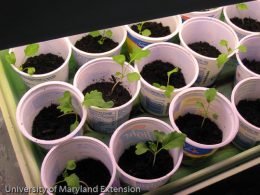I know many people save garden seed from year to year. Why would we do this? You may have your favorite variety of watermelon that you just can’t find anywhere so you keep the seed. Besides, garden seed can be expensive, and you may want to consider using seed from previous years to save some money.
sSeed stores best if kept in a cool, dark, dry location. Try a zip-locked plastic bag or a plastic jar such as a reused peanut butter jar to keep seed dry. Seed will be viable longer if kept between 40 and 50 degrees F. Temperatures a bit lower than 40 degrees are fine as long as they are not sub-freezing. Therefore a refrigerator is a better choice than a freezer which can prove detrimental to seed longevity if there is too much moisture in the seed. Seed that has 8% or less moisture can be frozen without harm and will actually store much longer than seed stored above freezing. Seeds dried to 8% or less moisture will break instead of bending when folded. Those that have a hard seed coat such as corn and beans will shatter rather than mashing when struck with a hammer.
Seed longevity will vary depending on the crop. Use the following as a guide for seed stored under cool, dry conditions.
Crucifers (cabbage, cauliflower, broccoli): 4 to 5 years
Corn: 2 to 3 years
Lettuce, endive: 4 to 5 years
Spinach, beets, carrots and chard: 2 to 3 years
Cucurbits: Squash, melons (including watermelon): 4 to 5 years
Tomatoes: 4 years
Peppers: 2 years
Onion, parsley, parsnip and salsify: 1 year
If you are unsure of viability and have plenty of seed, there is an easy method of determining how good your seed is. Place 10 seeds on a paper towel moistened with warm water and cover with a second moistened towel. Roll up the towels and place inside a plastic bag with enough holes for air exchange but not so many
that the towels dry quickly. Place the bag in a warm place such as the top of a refrigerator. Remoisten towels with warm water as needed. After the first week, check for germination. Remove sprouted seed and check again after another week. Add these numbers together to determine the percent germination.

